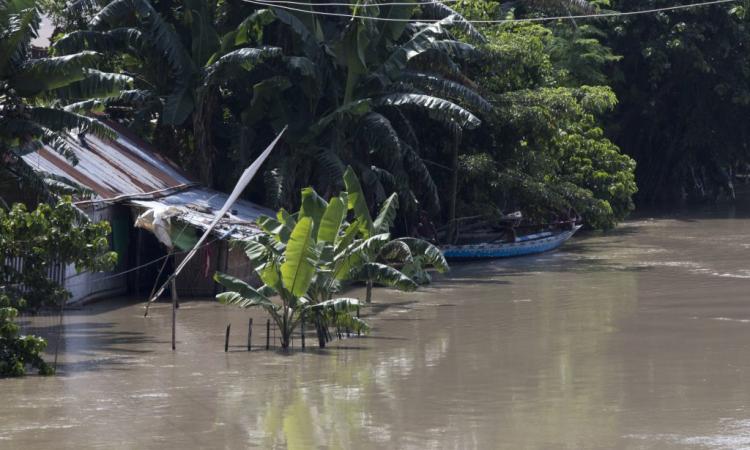
Reports of immense damage are continuing to emerge from Assam as the state is reeling under floods followed by incessant rainfall and landslides across many districts. Around 5,75,470 people including 1,15,314 children have been impacted so far. The state government has now set up 656 relief camps and centers to reach out to the affected population, as per the Assam State Disaster Management Authority (ASDMA). The deaths caused by floods go up to 28 in Cachar, Udalguri, Dima Hasao, Lakhimpur, and Darrang.
As the important task of assessing the damage and rapidly determining needs begins, Save the Children has mounted immediate relief operations to provide families with basic shelter, food, clean drinking water, and other necessities across Nagaon, Darrang, Biswanath – three of the most affected districts.
Apart from this, from their relief work in these districts they have observed that there is a huge problem with clean drinking water and sanitation with an obvious health outcome seen in the community. Children are suffering from severe fever and cough in the entire community. Adults are experiencing fungal infections on the skin, and children prone to contagious skin rashes.
Additionally, pregnant women face challenges like fear, anxiety, and lack of regular pre-natal check-ups due to the road connectivity being cut off in many parts. For women living in relief camps, menstrual hygiene is a major issue, as sanitary pads are unavailable.
With livelihoods affected, every penny is held on to then giving priority to hygiene. To top it all, any conversation on menstrual hygiene is still considered taboo. In a societal setup where women are given a separate corner of the house during the menstrual cycle, they are forced to live in small, cramped shelters and relief camps.
In camps where people were living in open areas, women were forced to relieve their standing, as most lands were inundated, causing them embarrassment, and exposing them to predators. Young girls have to be protected in the camps that have men from other communities.
In village Paschim Tetelisara of block Kathiatali, district Nagaon, women from the community have formed village level protection committee, especially to keep a watch on girls and women through the night to keep them safe from untoward incidents.
“The recent floods in Assam have left hundreds of thousands of people and children in severe distress. Apart from the loss of property, household items, and the stock of food items, this has affected the livelihood of people severely as a large part of farmland has been damaged,” said Chittapriyo Sadhu, Hub Lead - East, Save the Children, India.
“Many families with children are taking shelter in relief camps and roadsides in unhygienic conditions without access to safe water and sanitation. Schools and anganwadi centers are damaged and non-functional in large numbers making continuity of education an almost impossible option. Adolescent girls and women are facing tremendous challenges related to menstrual hygiene,” said Sadhu.
He further added, “Save the Children has already mounted a response reaching out to the families in relief camps with immediate support. We have plans to set up children-friendly spaces for education continuity, required care and protection as well as psychosocial support to children. We shall also be providing temporary shelter materials, education kits, family hygiene kits, and food items to children and families. In the longer run, our intervention will include support for the livelihood restoration of families in distress.”
Meanwhile, relief measures will continue to focus on providing shelter, food, health & hygiene, and nutrition support to families. The affected people have an immediate need for access to clean water, hygiene maintenance products like soaps, detergents, mosquito nets, sanitary cloth/napkins, etc., shelter materials like tarpaulins, mats, bedsheets, rope, etc. along with educational and play materials for children who have lost it or it has got damaged due to flood water rushing into the school buildings.
Save the Children has started response in the 3 worst affected districts of Nagaon, Darrang, and Biswanath with support to inmates in the relief camps. The kits comprise of hygiene supplies and play materials for the kids. One such kit is good for ten households.
About Save the Children
Save the Children works across 20 states of India and in 120 countries, on issues related to education, health, protection, and humanitarian/DRR needs of children, especially for those who are the most deprived and marginalized. Save the Children's association with India is more than 80 years old. Visit for more information.